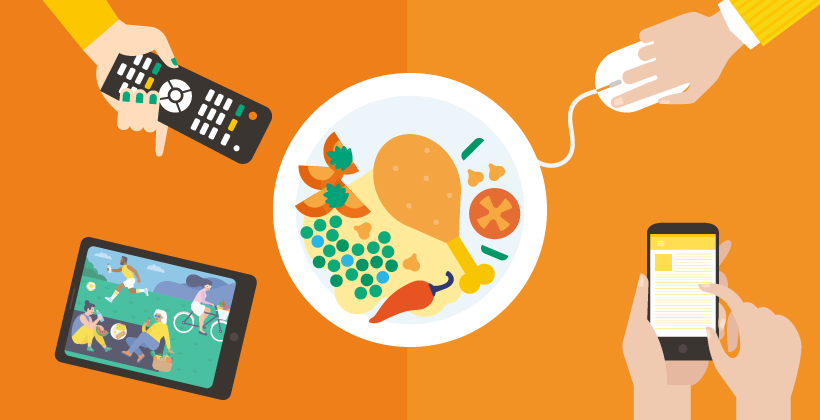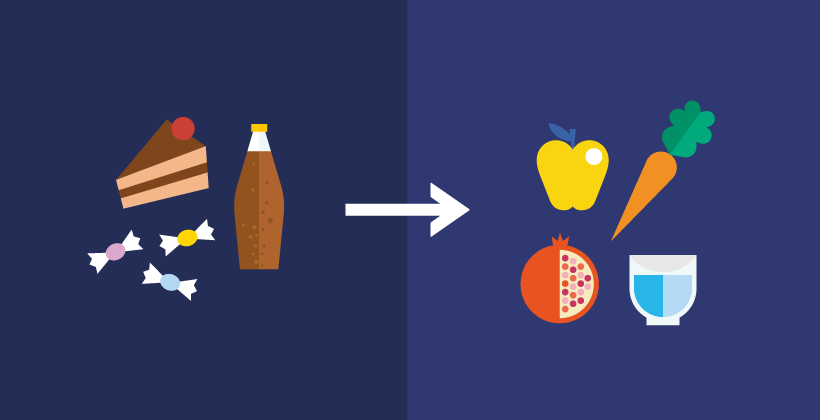Eating out: The healthier way
Last Updated : 11 September 2006For many Europeans who are too busy to shop or cook, an increasing number of meals are being eaten or prepared outside the home. Perhaps breakfast is grabbed on the way to work, lunch is taken at the local café, dinner is a take-away or at a restaurant. The more you eat out, the more important it becomes to choose wisely from the menu in order to stay on track with an overall healthy diet. Here are a few practical tips to help you…
Size matters
One key issue when eating out is that portion sizes can be huge. The bigger the portions, the easier it is to eat more than you need. Perhaps you feel obliged to clear your plate because you have paid for it. However, do not hesitate asking for a bigger portion of vegetables as they will fill you up while adding few calories. Learn when you have had enough and leave what you don’t want - alternatively only order what you need - for example don’t order an appetizer(first course) or dessert. If you are eating with friends, why not share portions? That way you get to taste lots of flavours without over indulging.
Make your meal count
We should be aiming for at least 5 portions of fruit and vegetables a day, so when eating out make sure your meal contributes. Vegetables can be found in soups, salads and side dishes, so include them in your menu choice. If you are having dessert, why not choose a fruity one? Fresh fruit juice and smoothies can also contribute to your fruit and vegetable count.
Quality and quantity
Red meat like beef and lamb is a good source of iron. Duck and game are also rich in iron, but all of these types of meat can be very fatty, so choose lean cuts or trim the fat and select cooking methods like grilled or roasted. Pork is now reared to be lean and chicken and turkey are naturally low in fat.
Fish oil
Fish is a good choice. You can alternate oily-fish, like salmon, sardines, mackerel and tuna, which are rich in the omega-3 fatty acids, with lean fish, like plaice, hake or cod. Intake of omega-3 fatty acids is currently low in many peoples diets. Fish is also something that some people find difficult to cook, so a restaurant is an ideal time to try it out. Select cooking methods like grilled or baked.
Starchy staples
Order bread, rice, pasta or potatoes as these are the foods that will fill you up. In general, choose boiled rice or potatoes over fried. If you like to use butter or your choice of spread on your bread, use it sparingly. Margarine has a healthier fatty acid composition than butter, although it has the same number of calories. Choose a tomato sauce rather than a cream based pasta sauce. Try bread, rice and pasta that are wholegrain; they contain extra fibre and nutrients compared to white varieties.
Sauces and seasonings
Always taste your food before adding salt or other condiments, as the chef in the kitchen has already seasoned your food. Ask for sauces on the side. In this way you can have as much or as little as you like. For salad dressings choose one based on olive, rapeseed or walnut oil for example, which are full of beneficial mono- and polyunsaturated fatty-acids, rather than mayonnaise or creamy ones.
Eggs and dairy foods
Eggs and dairy foods, like cheese, milk and yoghurt, are highly nutritious, but as with meat, small portions are best. For example, use cheese in moderation as a garnish rather than the main course, and have one egg with your breakfast rather than two and not too often. You can choose low-fat dairy products if you are keeping an eye on your fat intake.
Pulses
Pulses, like peas, beans and lentils, are often part of traditional soups and stews so why not try such dishes when you are out? Pulses are a great addition to the diet as they provide fibre and keep you full longer, because of the low digestion rate of pulses.
And a nice glass of wine?
Part of eating out for many adult people is a nice glass of wine or a beer, and moderate consumption is fine. However it is surprisingly easy to overdo it. As a guide, adult women should consume a maximum of two alcoholic drinks per day and adult men three. To help keep alcohol consumption within limits, try alternating water or a soft drink with alcoholic ones, which also helps to prevent dehydration.
The ‘treat factor’
If you tend to eat away from home regularly out of necessity, dining out can no longer be regarded as a treat and it is wise to make health conscious decisions when choosing from the menu. However on special occasions at that fabulous restaurant you have been meaning to try for ages, it is fine to enjoy yourself and have whatever takes your fancy - don’t forget it is the overall balance of your diet over weeks or months that matters.
So remember the key message is plenty of variety, everything in moderation and lots of pleasure!



